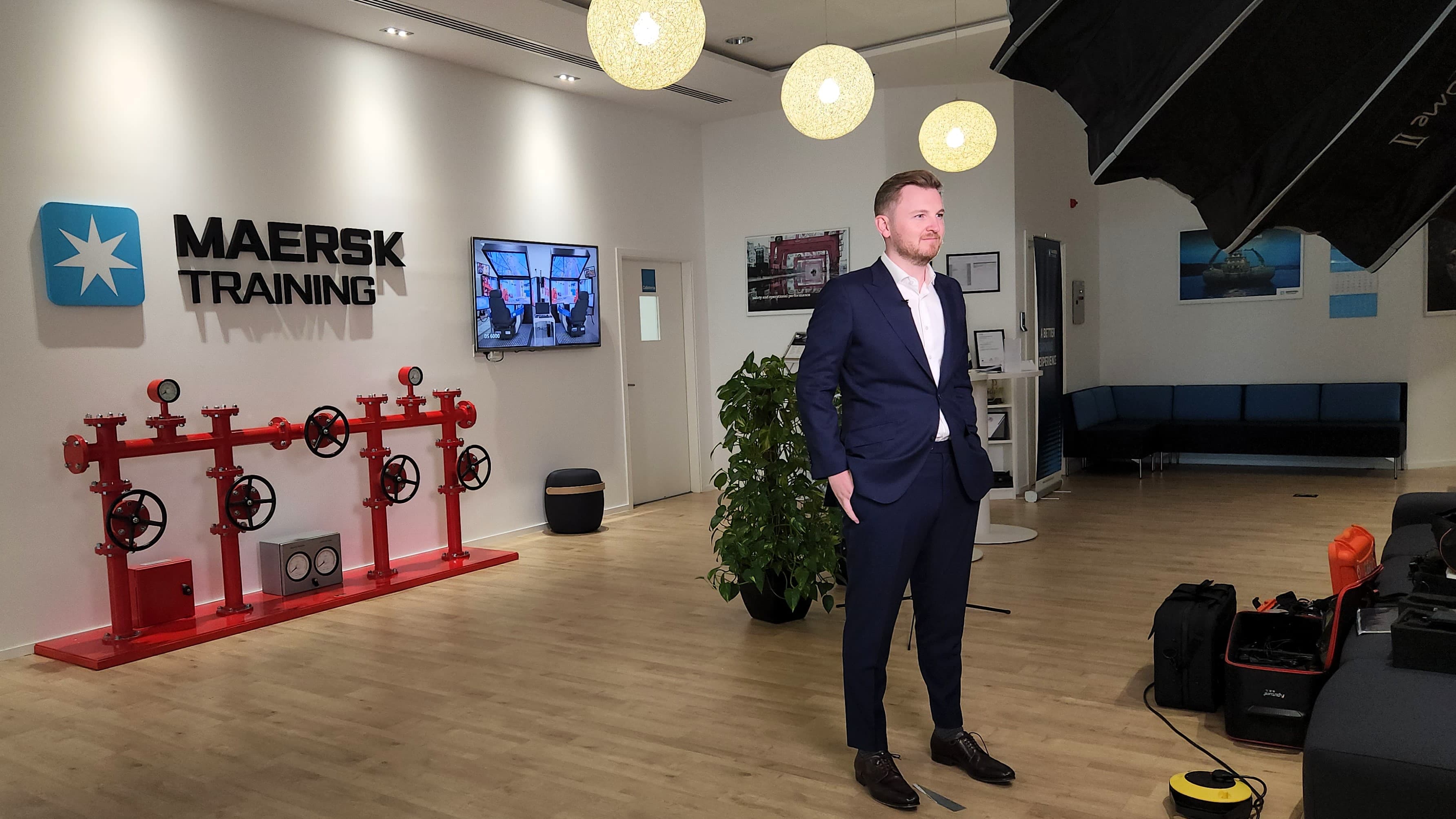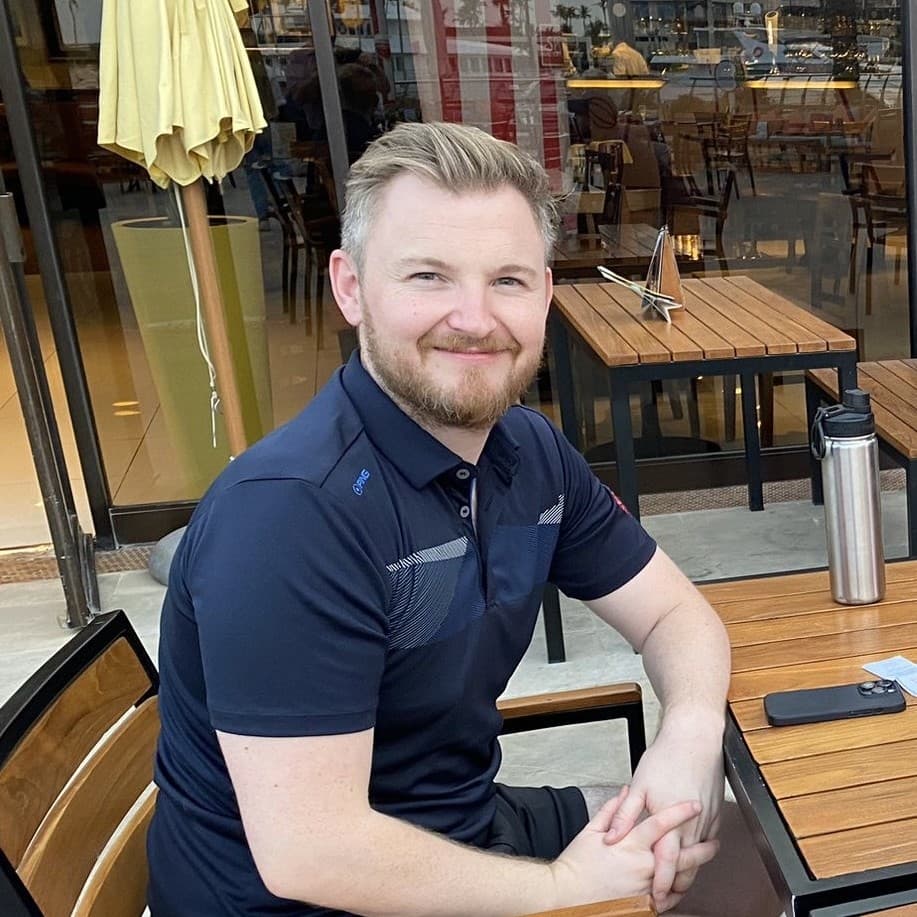Tom Milburn: “People Want to Help If You Let Them”
May 2025

Tom Milburn on finding the courage to speak up and why real leadership starts with listening
For most people who work with Tom Milburn, the words confident, capable and positive would come to mind.
As Global Head of Sales at Maersk Training, he’s led international teams, built strong customer relationships and worked across time zones from his base in the UAE. On the surface, everything looked steady.
But in late 2023, Tom began to notice something wasn’t quite right.
“I just didn’t feel like myself,” he says. “I was more tired, quicker to frustration, and my thoughts kept looping. I just felt a little off.”
“I realised I’d been in this pattern before. Telling myself to stay busy, keep occupied, and it’ll pass. But I wanted to do something different this time, to hopefully make a longer-lasting impact”
That mindset, seeing mental health as something worth working on rather than hiding, was the beginning of a change.
A change
There was no dramatic moment. Just a growing awareness that something felt off. More fatigue than usual. A bit less patience. Thoughts sticking longer than they should.
“For a period, I felt flat and stuck,” Tom says. “Trying to lead a department when you're not okay yourself made me feel guilty. Like I was letting people down, even when nobody had said that.”
It’s something many people experience at work, regardless of role or industry. And yet, it often goes unspoken.
Behind the familiar day-to-day, lots of us are quietly trying to get through moments that feel heavier than they should.

Turning point: saying something
Tom did something that not everyone feels comfortable doing. He spoke up.
He started with his family and close friends, then opened up to his manager, Jan Tore Knutsen.
“He gave me space. Time. He looked out for me even when he was under pressure himself. That level of support is rare, and I’ll always be grateful to him.”
Tom also made the decision to see a psychologist. That step, he says, gave him the clarity and tools he needed to move forward.
A technique he still uses today is the CBT thought record. It helps him connect situations to feelings and automatic thoughts, then test those thoughts by asking: is this really true? What’s the evidence for and against it?
“It sounds simple, but it works,” he says. “It helps stop the negative thought cycle. You realise a lot of the pressure is coming from your own assumptions, not from anyone else.”
Backed by routine, supported by people
Alongside therapy, Tom focused on simple things that help him stay steady. Exercise. Better rest. Writing things down.
“I had to get back to basics. Moving my body, getting proper rest and emptying my head on paper. That structure helps me put the day behind me and move on.”
He also leaned on his wife, Alex, family and close friends.
“They were great. Just giving me patience and being there to hear me out. It made me realise how fortunate I am.”
At work, the same support showed up in smaller ways too. People checking in, listening properly, and giving space when it was needed. It reminded Tom that creating a safe environment and psychological safety doesn’t take grand gestures. It just takes awareness and consistency.
Changing how we lead
Today, Tom leads with more empathy.
“I feel I’m more patient. More open. And I try to create the kind of space for others that was given to me.”
That means checking in regularly. Not just about tasks or targets. It means making time for informal conversations. Being willing to listen without needing to solve everything.
He’s also more open about his own story, which helps others feel safe to share theirs.
“We talk a lot about safety in our industry, and for me, psychological safety is just as important. That means being able to speak up without fear, without worrying about judgment or consequences. And that applies to our personal lives too. If we’re having a tough day or moment, that’s natural. Ignoring it doesn’t help anyone. Not our teams. Not the business. Not ourselves."
If someone’s struggling...
Tom’s advice is simple.
“Say something and seek support. Talk to a friend, a colleague, a professional. The weight gets lighter when you speak up. Most people want to help. They just don’t know you need it unless you let them know.”
He knows the conversation around mental health is still evolving. But the more people talk about it, the more normal it becomes.

Facts
Mental health at work: facts and actions
-
Around 15% of working-age adults live with a mental health condition
-
Depression and anxiety cost the global economy more than $1 trillion each year in lost productivity
-
Psychosocial risks at work, like unclear roles, poor communication, or unrealistic demands, can affect mental wellbeing
What WHO recommends
-
Train managers to recognise signs of distress and respond supportively
-
Encourage open, stigma-free conversations about mental health
-
Make adjustments where possible, like flexible schedules or manageable workloads
-
Include mental health in workplace policies and leadership practices
What is CBT?
CBT stands for Cognitive Behavioural Therapy. It’s a practical, structured approach that helps people recognise and challenge unhelpful thought patterns.
At its core, CBT is about spotting the link between what we think, how we feel, and how we act.
In workplace settings, CBT is often used to manage stress, anxiety, and burnout, helping people break the cycle of negative thinking and build healthier responses to pressure.
Source: World Health Organization, 2022